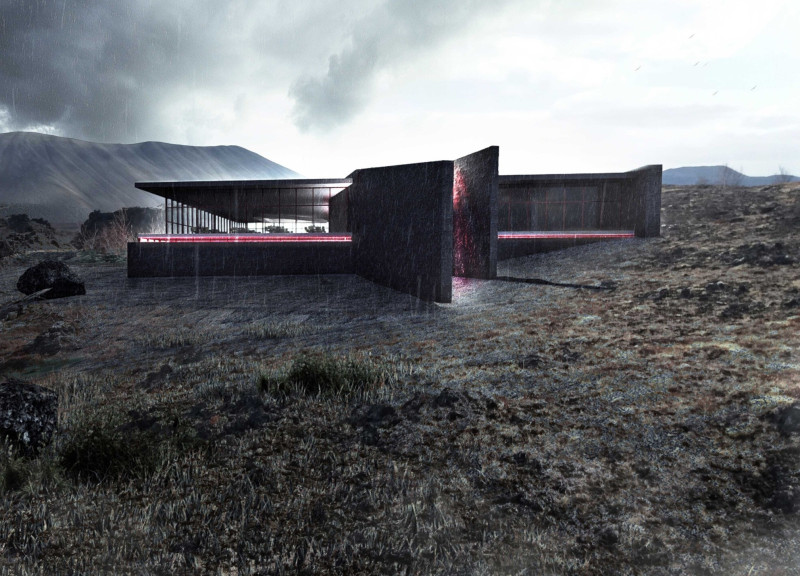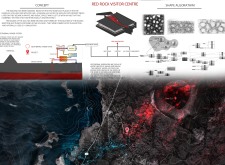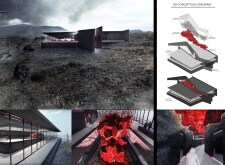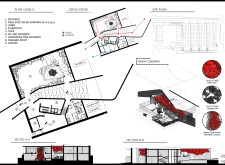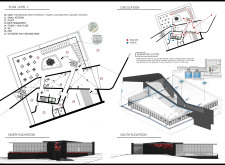5 key facts about this project
The design integrates naturally with its environment, located between Hverfjall Volcano and Mývatn Lake. This particular setting shapes its overall concept, creating a strong connection between these notable features of the landscape. The building is organized along an axis that links the distinct areas, providing spaces that serve both private activities and public engagement. It functions not only as a structure but also as a bridge between nature and human experience.
Geothermal Power Integration
A key feature of the design is its geothermal power system, which supports sustainability efforts. This technology harnesses the earth's heat without depending on fossil fuels. Essential components include production and injection wells, a turbine, generator, and heat exchanger. The method of reusing hot water or steam emphasizes a commitment to renewable energy.
Spatial Organization
Thoughtful spatial organization enhances the building's usability. Upon entering, visitors encounter a central axis that can host exhibitions and serve as a gathering point. Surrounding this are important spaces, including a lobby, administrative offices, exhibition areas, and restrooms. This layout promotes ease of movement and access, making it straightforward for people to navigate.
Structural Components and Materials
The design includes various structural elements that contribute to its integrity. Skylights provide natural light throughout the interior. Magma stones and a steel structure are used to blend aesthetics with functionality. The base wall and floors add to the overall strength, ensuring that the building can withstand environmental challenges.
Rainwater Management System
An innovative aspect of the design is the dual rainwater collection system. Rain falling on the roof is funneled into storage tanks for reuse. Additionally, water running off windows and walls is captured, further enhancing sustainability efforts. This system shows a practical approach to resource management and demonstrates an awareness of the surrounding environment.
The building's details reflect a careful consideration of the unique landscape, illustrating a harmonious relationship between architecture and nature. Features showcase the local geology while facilitating human activities, combining natural elements with functional design.


